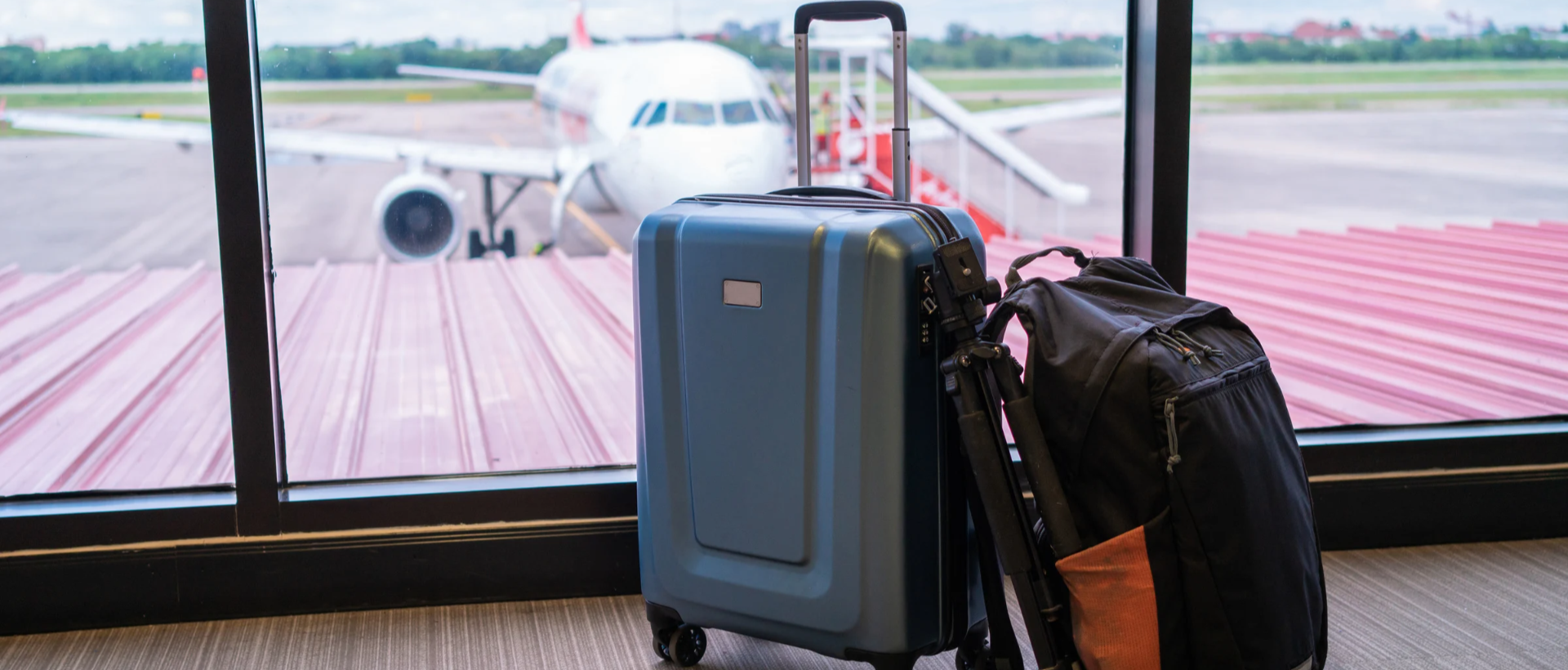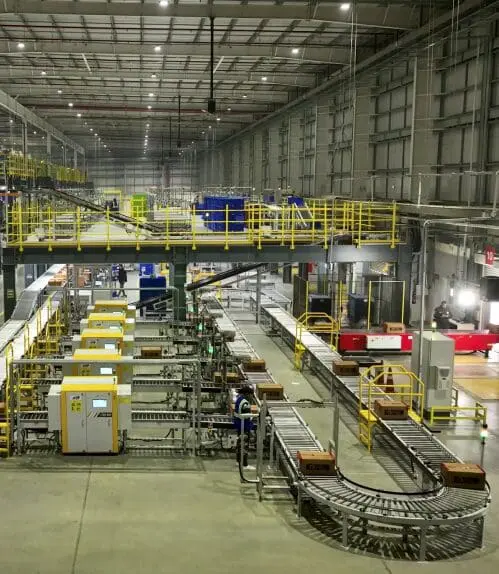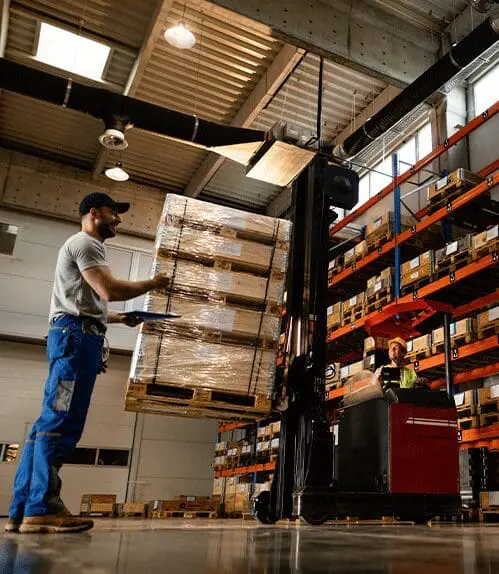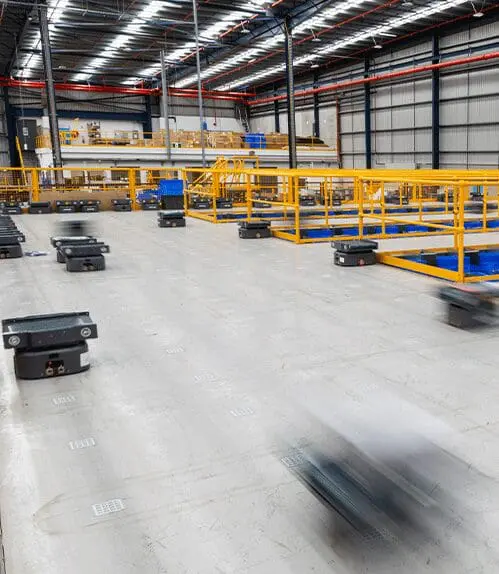Airports are increasingly relying on robots for tasks such as cleaning and assisting passengers. As technology continues to improve, robots are expected to automate more operations, potentially transforming the way we travel.
Passengers often experience delays of 10-15 minutes waiting for baggage trolleys, and early luggage handling remains a significant frustration for airport management.
Automating luggage check-in, screening, sorting, retrieval, and automated baggage handling enhances efficiency, passenger experience, and safety ensuring reliable conveyor systems can manage thousands of pieces of luggage daily without interruption, which is crucial for seamless airport operations.
These advancements aimed at optimizing airport processes and enhancing sanitation through intelligent automation, ultimately making air travel more efficient and stress-free.
What is BHS
A Baggage Handling System is an essential part of modern airport infrastructure, designed to streamline and enhance the efficiency of baggage processing. It is an integral part of modern airport infrastructure, designed to streamline and improve the efficiency of baggage processing.
Why are Airports Adopting Automation?
Airports are using robotics and automation because customers have complained about waiting for baggage trolleys for at least 10-15 minutes, and early luggage handling is another source of frustration for airport management. Robots can drastically cut the amount of time passengers spend in airports and streamline most present operations. Although robots would primarily serve customers, they will benefit airline corporations and airport authorities by encouraging more people to fly. Here are a few ways airport robots will streamline operations, benefiting businesses and passengers.
Efficiency and Productivity
Faster Processes: Automation speeds up processes such as check-in, baggage handling, and security checks, reducing wait times for passengers.
Consistent Operations: Robots can work continuously without breaks, ensuring consistent operation and reducing the likelihood of human error.
The Zippy robotic sorter from Addverb can also enhance airport sorting solutions and improve overall produc
Cost Reduction
Labor Costs: Automation reduces the need for human labor in repetitive and mundane tasks, leading to cost savings in salaries and training.
Maintenance: Robots can perform maintenance tasks, such as cleaning, more efficiently and frequently than human workers, potentially extending the life of airport facilities and equipment.
Improved Passenger Experience
Convenience: Self-service kiosks and automated check-in and bag-drop systems streamline the passenger experience.
Personalized Service: Robots can provide information, assist with navigation, and offer personalised services in multiple languages, enhancing the overall travel experience.
Adaptation to Increased Passenger Volumes
Scalability: As passenger numbers grow, automation allows airports to scale up operations without proportional increases in staffing.
Capacity Management: Automated systems can help manage peak times and high passenger volumes more effectively.
Enhanced Security
Surveillance and Monitoring: Automated systems and robots can enhance security by providing continuous surveillance and monitoring for suspicious activities.
Screening and Detection: Robots equipped with advanced sensors can assist in the screening of passengers and luggage, improving the accuracy and speed of security checks.
Addverb’s AMRs can work simultaneously with humans, enhancing airport safety and reducing operational time.
Health and Safety
Pandemic Response: During health crises like COVID-19, robots can reduce human contact by performing tasks such as cleaning and disinfecting, thus helping to maintain hygiene standards and protect passengers and staff.
Workplace Safety: Automation can handle dangerous or physically demanding tasks, reducing the risk of injury to human workers.
Data Collection and Analytics
Real-Time Data: Automated systems collect vast amounts of data that can be analysed to optimize airport operations, improve passenger flow, and enhance decision-making.
Predictive Maintenance: Robotics and IoT devices can monitor equipment in real time, predicting when maintenance is needed to prevent breakdowns and delays.
Addverb’s Offering for Airports
Autonomous Mobile Robots (AMRs)
These robots are utilized for baggage handling and transportation, reducing the need for manual labor and minimizing errors.
Automated Storage and Retrieval Systems (AS/RS)
These systems are implemented in warehouses within airports for efficient storage and retrieval of goods, including spare parts and other critical items required for airport operations.
Automated Guided Vehicles (AGVs)
AGVs are used for the transportation of goods and equipment across different areas of the airport, ensuring seamless and efficient movement.
Conveyor Systems
Addverb’s conveyor systems are designed to handle the high volume of baggage and cargo, ensuring smooth and fast transportation through various checkpoints.
Witness how a smart conveyor system can be incorporated into airport operations for efficient baggage handling.
AI and IoT Integration
Advanced AI and IoT solutions are integrated into the airport systems to provide real-time data analytics, predictive maintenance, and enhanced decision-making processes.
Advantages of Automated Baggage Handling
For Customers
Reduced Wait Times: Automated systems speed up retrieving baggage, significantly cutting down on the time passengers spend waiting for their luggage.
Improved Accuracy: Automation reduces the risk of human error, ensuring that bags are accurately tracked and delivered to the correct destination.
Enhanced Customer Experience: Streamlined baggage handling contributes to a smoother and less stressful travel experience.
Increased Convenience: Automated trolleys and self-service kiosks for baggage drop-off make the process more convenient and user-friendly.
For Airports
Operational Efficiency: Automation streamlines baggage picking processes, improving overall efficiency and throughput.
Cost Savings: Reduced need for manual labour in baggage handling can lower operational costs.
Higher Capacity Management: Automated systems can store larger volumes of luggage, supporting increased passenger traffic without additional strain on resources.
Enhanced Reputation: Efficient baggage handling improves the airport’s reputation, potentially attracting more airlines and passengers.
Data Insights: Automated systems generate valuable data that can be used to optimize operations and enhance decision-making processes.
Way Foward
In the airport, we are implementing automated baggage handling and palletization technologies. BLE Tracking, Advanced Security Measures, Smart Conveyor Solutions, and Disinfection Measures are among the airport automation packages we provide. We are also introducing ATRS (Automatic Tray Retrieval System), which is supposed to increase productivity, decrease waiting times, and enhance passenger flow.
ATRS is designed to fulfill the demands of every airport, from the smallest to the largest international airport design and engineering innovation help to significantly reduce queues while keeping the airport’s highest security requirements.
The integration of an end-to-end automated baggage handling system not only allows airports to expand and better serve their airline customers and passengers but also positions modern airports as leaders in baggage handling efficiency, increasing baggage traceability and security at every stage of the process.
Why are Airports Investing in Automation? Click here to know more
Conclusion
Many airports are increasingly adopting automated baggage handling systems(BHS) to streamline operations, reduce errors, and enhance overall security. These systems improve efficiency, reduce errors, and enhance security in airports. They simplify processes, resulting in quicker check-ins and more seamless travel experiences. Embracing this technology is crucial for modern air travel, as it boosts operational efficiency and customer satisfaction.
What is an automated baggage handling system?
An automated baggage handling system uses advanced technology to sort, transport, and track luggage within an airport, reducing the need for manual handling.
How do automated baggage handling systems improve efficiency?
These systems streamline the baggage handling process by quickly sorting and transporting luggage, reducing wait times for passengers, and minimizing the risk of lost or delayed bags.
Are automated baggage handling systems safe?
Yes, they enhance security by using advanced scanning and tracking technology to monitor luggage throughout its journey, reducing the risk of tampering or loss.
Can automated systems handle large volumes of baggage?
Absolutely. Automated baggage handling systems are designed to efficiently manage high volumes of luggage, making them ideal for busy airports.
How do these systems benefit travelers?
Travelers experience faster check-ins, reduced wait times at baggage claim, and a lower likelihood of lost or delayed luggage, leading to a smoother travel experience.
Are there any downsides to automated baggage handling systems?
While the initial installation can be costly and requires significant infrastructure, the long-term benefits of efficiency and reliability often outweigh these initial challenges.






